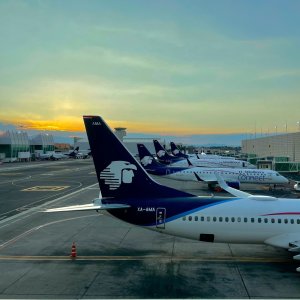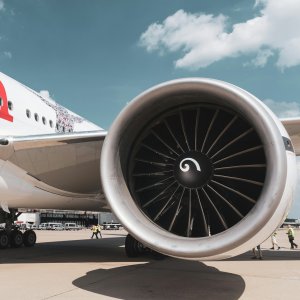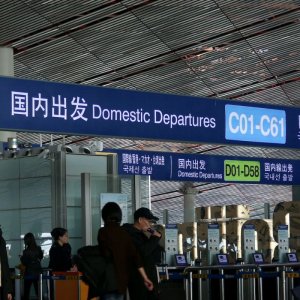Strengthening Mexico City’s Cultural Offering

STORY INLINE POST
Q: What role does the tourism sector play in Mexico City’s economic performance?
A: Mexico City’s economy is service-centered. Practically 90 percent of the city’s GDP is generated from services, the most profitable being financial, data transmission, information, energy, education and health. But tourism, which is only measured as hotel and restaurant activity, plays a very important role. According to INEGI, tourism in Mexico City generates 1.3 million jobs and in 2019, it generated economic revenue of almost US$6 billion only from tourists staying in hotels. When it comes to currency generation, it is the second-most important economic sector of the city, just after FDI and before remittances. Also, the tourism sector has the great advantage of being considered a sector that generates “democratic” economic revenue, because money goes directly to the bell boy, the person who cleans the room, restaurant owners, waiters, tour guides and other industry participants. Tourism activity also favors employment of young people and is increasingly requiring specialized training to address the sector’s challenges.
Q: What strategies is the ministry pursuing to position Mexico City as a tourist destination at a national and international level?
A: Mexico City is the main national tourist destination in the country. When adding national and international visitors, in 2019 a total of 14 million people stayed in hotels and 1 million stayed in different locations using Airbnb. Out of this 15 million, almost 4 million were international visitors and the rest are national travelers. While we do not have a specific number, we also need to consider those tourists who come and visit their families and friends and stay at their houses, which could easily add another 15 million visitors. Quintana Roo, for example, receives more international tourism than Mexico City. However, when adding national and international tourist arrivals, Quintana Roo does not reach the 15 million mark.
However, positioning Mexico City has been a long process that started in 1997. Between 1997 and 2000, the local government made a diagnosis regarding Mexico City’s productive calling. Between 2000 and 2006, the city initiated the development of tourism corridors, including the remodeling of the Historic Center and Paseo de la Reforma, and implemented an important promotion program. Between 2006 and 2012, the city continued working on the restoration of public spaces for tourism use, such as the Monument to the Mexican Revolution. These projects generated a significant tourism boom. In 2000, the city received 8 million tourists. In 2012, the city hosted almost 12 million tourists. At first, the city was considered a destination for business tourism. Today, the proportion of business tourism is around 40 percent, while the rest is considered cultural tourism.
Q: What strategies will the current administration implement to strengthen Mexico City’s position as a cultural destination?
A: When analyzing the geographic distribution of the city, most of the tourist attractions are concentrated in its western quadrant. However, the rest of the city still has important spaces that need to be taken into account to develop tourism activities. These are located in the east and south of Mexico City. One of the most important policies of the current administration is the creation of employment. Tourism is an important employment generator.
One of the most important strategies for tourism development in the city is to develop new tourist areas, making them accessible. These programs are called Turismo de Barrio (Neighborhood Tourism) and Turismo de Naturaleza (Nature Tourism), which are also segmented according to their population target. For instance, we have an LGBTTTI offer, a cultural offering surrounding the Day of the Dead and sports tourism that includes the NFL and NBA games, as well as F1.
We also have an important project called Turismo Social (Social Tourism) that focuses on providing tourism experiences to almost 400,000 people from all the neighborhoods in the city to other neighborhoods. We have agreements with almost 150 museums, parks and associations to provide experiences and create a tourism culture.
Q: The federal Ministry of Tourism has said it is important to focus on the economic spill that tourists bring. What is the most important metric for the Ministry of Tourism of Mexico City?
A: Almost 65 percent of the revenue generated in the industry comes from foreign visitors, while 35 percent of the economic revenue is generated by national tourism. This means there is a great imbalance between the expenditure of national and foreign visitors. However, Mexico City has a tourism offering for all types of income and our goal is for tourists to have a high level of satisfaction.
Q: What are the city’s expectations in terms of visitors and revenue for 2020?
A: Tourism is an activity that does not depend exclusively on what a government does. It is an international activity that is transversal and does not stop growing. Recently, the World Tourism Organization published its growth estimations for the entire world, and for America, it estimates 3 percent growth. Locally, we also have a growth estimation of 3 percent. Although the possibility exists that we will not reach the 3 percent threshold, we are confident that we will reach at least 1.5 or 2 percent growth.
Carlos Mackinlay has a Master’s in economic sciences. He has held several positions within the Ministry of Tourism of Mexico City, such as Director General of the Tourism Promotion Industry and Director of the Office of Congresses and Businesses








 By Gabriela Mastache | Senior Journalist and Industry Analyst -
Thu, 02/06/2020 - 16:47
By Gabriela Mastache | Senior Journalist and Industry Analyst -
Thu, 02/06/2020 - 16:47
















